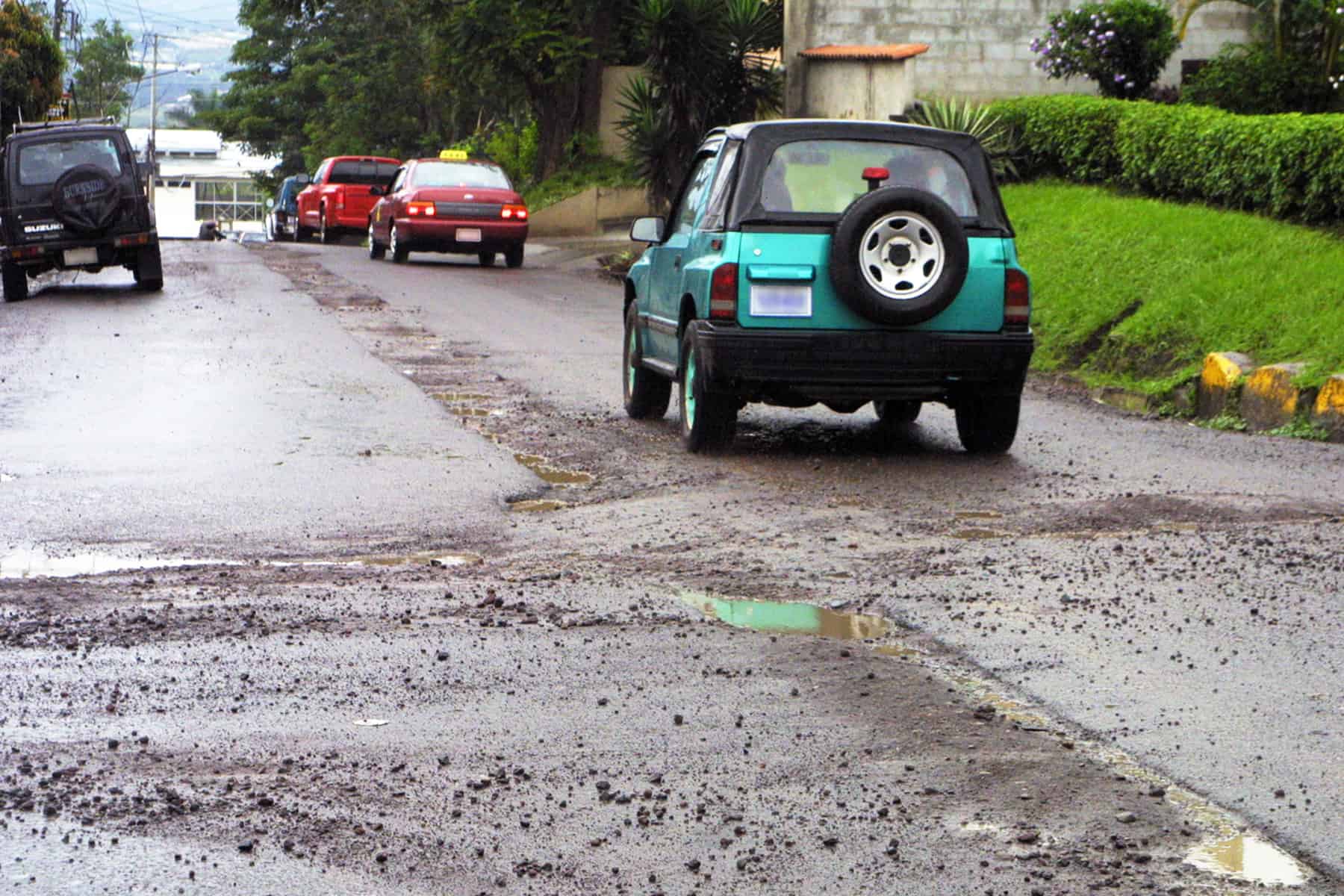Shocking, we know, but a total of 95 percent of paved roads in Costa Rica are not of adequate quality or do not have the appropriate capacity to handle the current amount of traffic on any given day, a study by the University of Costa Rica’s National Laboratory of Materials and Structural Models (LANAMME) found.
The poor conditions of roads lead to higher costs for motorists who are forced to drive at reduced speeds, which increases traffic congestion and pollution, LANAMME experts said Wednesday morning, during the presentation of their sixth “Evaluation of the National Paved Roadway Network 2014-2015.”
The study also found that 12 percent of the country’s paved roads need urgent attention.
According to the study, only 4.5 percent of the country’s roads are in “good” condition. Most of the roads – 62 percent – are in “poor” or “very poor” condition. The others are considered “regular.”
LANAMME experts also evaluated roadway surfaces and found that only 2.5 percent are in good condition. That means that 34 percent of paved roads become slippery when wet (cue Bon Jovi), and 20.6 percent of surfaces become highly slippery. Sounds dangerous.
Researcher Guillermo Loría Salazar said the university laboratory recommends officials use the research as a tool for planning future investment in the national roadway network.
Poor infrastructure is one of the top-cited concerns by local and international business leaders operating here. At a recent Americas Society/Council of the Americas cities conference in San José, Roberto Echandi of the World Bank said Costa Rica has fallen behind its rivals because of its lack of infrastructure investment.
Tourism – a major revenue generator for the country – also suffers.
“As long as we have these [infrastructure] conditions, we’re going to be holding back tourism in this country,” National Liberation Party lawmaker Antonio Álvarez Desanti acknowledged at an economic roundtable organized by the Costa Rican-American Chamber of Commerce last year.
According to the LANAMME study, the government in the past two years invested ₡17 billion ($31 million) in repairing 972 kilometers of roads in the country, but most of those repairs failed to improve their overall condition.
After those repairs were made, 655 kilometers of roads currently are in worse condition than before, while 247 kilometers have partially improved and 69 kilometers have improved surface conditions.
Loría said the findings are consistent with a recent study on “Population Perceptions of the National Roadway Network,” in which 67.9 percent of those surveyed said the country’s roads are in bad or very bad condition. Half of the respondents believe that the main problem of public roads is the large number of potholes.
Research included the evaluation of all 5,268 kilometers of paved roads across the country. LANAMME conducts its study every two years and does not include unpaved roads or those in rural communities, the lab reported.
The LANAMME report confirms what we drivers in Costa Rica already know: While on the road, we’re often…Livin’ on a Prayer.






